
A cylinder seal dating back to 4 thousand years was discovered in the ancient city of Maydos
Turkish archaeologists have found a 4,000-year-old cylinder seal in the ancient city of Maydos, as well as a lead sling stone that is about 3,400 years old.
The ancient city of Maydos is located in the Eceabat district of Çanakkale province in western Türkiye.
Maydos was continuously inhabited from the Chalcolithic Age until the Middle Ages.
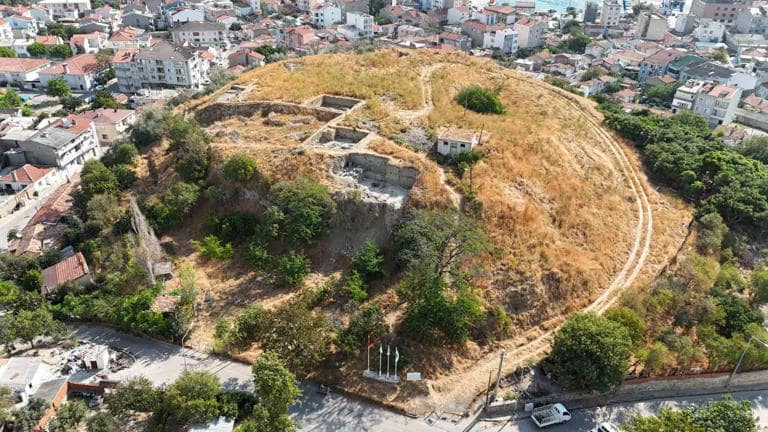
Excavations in the 5,000-year-old Maydos Ancient City continue under the direction of Prof. Dr. Göksel Sazcı, a faculty member of Çanakkale Onsekiz Mart University (ÇOMÜ) Department of Archaeology, with an excavation team of 10 people and 6 workers.
In the 2024 excavation season, the excavation team focused on the layers dated to the beginning of the Middle Bronze Age, i.e. 2000 BC, which is known as the Troy-5 period and about which little information is known.
Prof. Dr. Göksel Sazcı said, “One of the most interesting finds of this year is a 4000-year-old cylinder seal made of frit.”
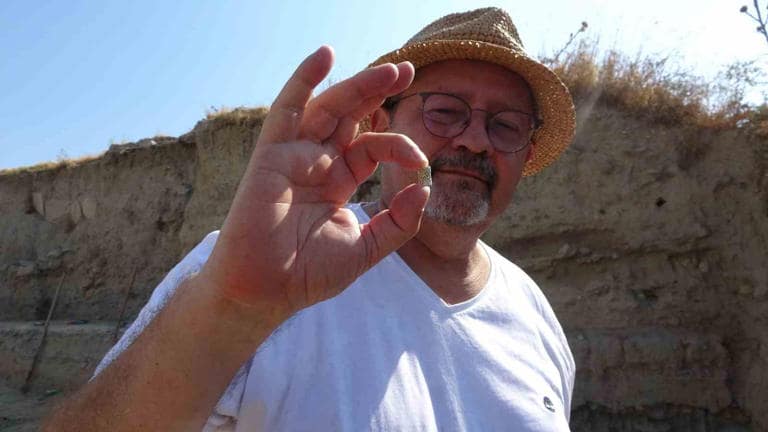
The top of the cylinder seal is decorated with zigzags and the bottom is bordered with triangles.
Stating that cylinder seals are not of Anatolian origin, Prof. Dr. Sazcı said that these seals first appeared in Uruk, i.e. Southern Mesopotamia, about 5 thousand years ago.
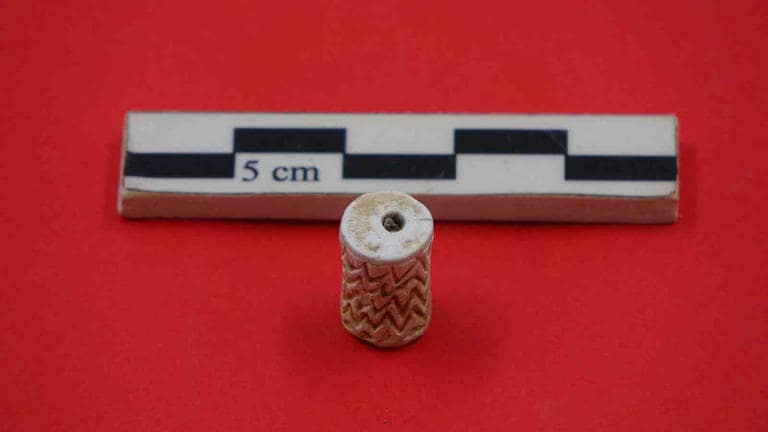
“Such seals also have a hole in the middle and these are finds that were probably carried around the neck and symbolize ownership. There are both stamp and cylinder versions of these seals in Troy and they are first seen in the late Early Bronze Age, roughly in the late 3rd millennium BC. The fact that it appears only as a cylinder is unique in the region. In Western Anatolia, a similar one was recently found in Tavşanlı Höyük in Kütahya.”
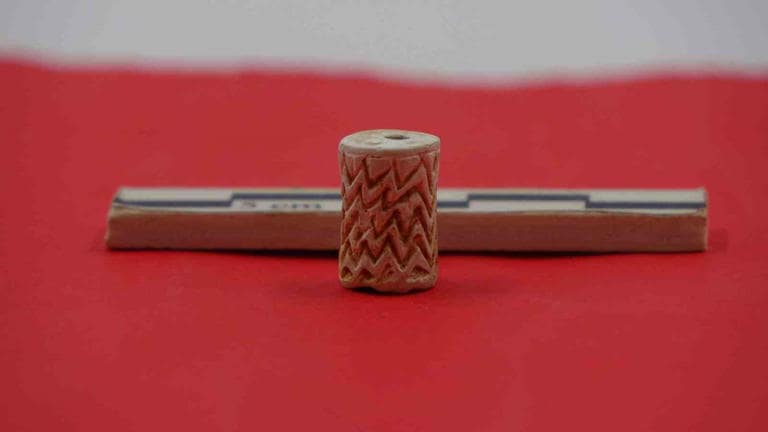
“We know from the finds from Kültepe near Kayseri that this trade network, which started in Mesopotamia, intensified into the interior of Anatolia. With the Tavşanlı Höyük find, we can say that one branch of this trade network extended to Western Anatolia, and with the Maydos find, we can say that another branch extended to the European side via Northwestern Anatolia.”
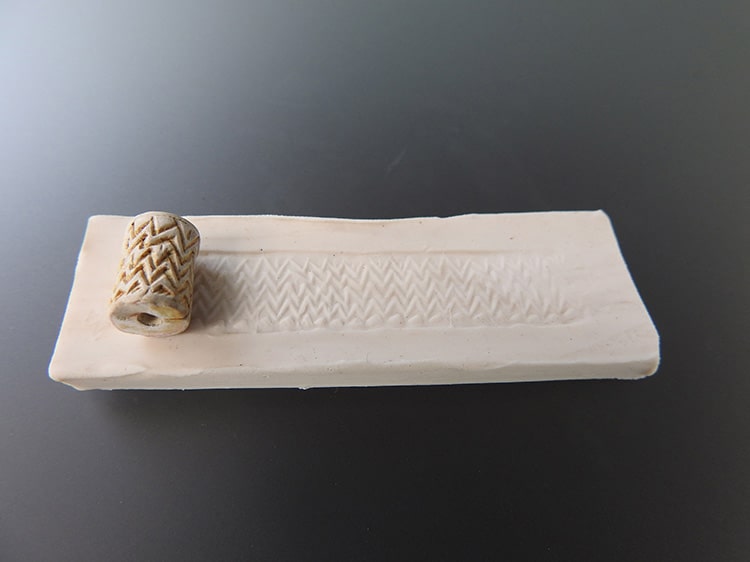
“Seals are symbols of personality, that is to say, they are a kind of trademark, a sign, perhaps to guarantee a product, a commodity, perhaps to determine its ownership. The seals are applied both on ceramics and on clay that is glued to the connection point of a product tied with a rope and then dried. This is done to determine whether a product has been opened or not. Also, as I mentioned before, in addition to its guarantee function, it both shows its brand and determines its ownership. Seals can have different functions in this way.”
Another rare find is a lead sling stone
Explaining that another interesting find besides the cylinder seal was a lead sling stone, Prof. Dr. Göksel Sazcı said, “Such finds have been used since the Paleolithic Period, when the hunter-gatherer lifestyle prevailed, until today.”
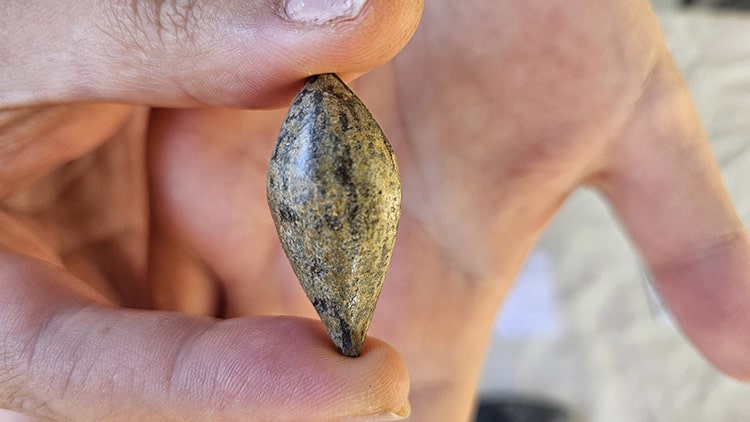
“Slingshot stones are usually made of stone and terracotta. Those made of lead are very rare and mostly found in the Hellenistic and Roman periods. The number of those found in the Bronze Age is very few. There is half an example in Troy. Such finds are mostly known from Crete, the Knossos settlement and Cyprus. These are deadly weapons. They are sharp at one end and can cause permanent and severe damage when they hit a person.”
You may also like
- A 1700-year-old statue of Pan unearthed during the excavations at Polyeuktos in İstanbul
- The granary was found in the ancient city of Sebaste, founded by the first Roman emperor Augustus
- Donalar Kale Kapı Rock Tomb or Donalar Rock Tomb
- Theater emerges as works continue in ancient city of Perinthos
- Urartian King Argishti’s bronze shield revealed the name of an unknown country
- The religious center of Lycia, the ancient city of Letoon
- Who were the Luwians?
- A new study brings a fresh perspective on the Anatolian origin of the Indo-European languages
- Perhaps the oldest thermal treatment center in the world, which has been in continuous use for 2000 years -Basilica Therma Roman Bath or King’s Daughter-
- The largest synagogue of the ancient world, located in the ancient city of Sardis, is being restored











Leave a Reply